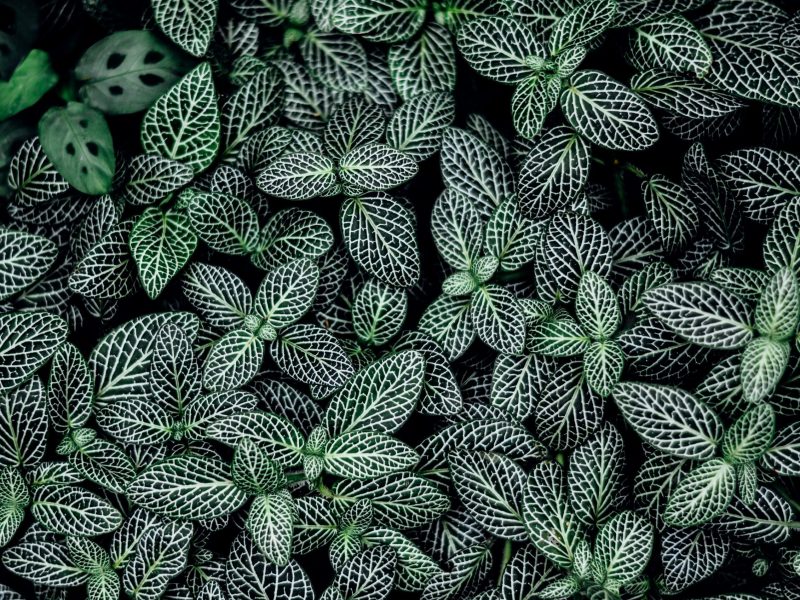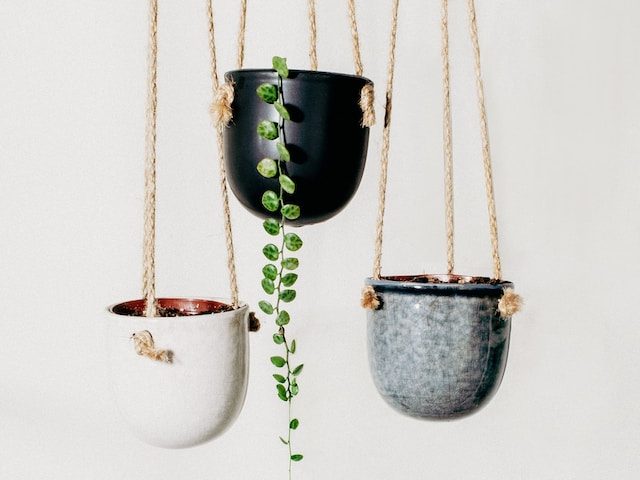
Drooping and limp leaves are quite a common problem that Nerve Plant parents face. There are several causes so it’s important to find out pretty quickly what the exact problem is so you can reverse it. If there are no other problems with your Nerve Plant apart from droopy leaves then it should mean you have caught the issue early. With a few changes to your routine or your plant’s environment, the leaves should start to bounce back.
Not enough water can cause droopy leaves
The most common cause of drooping Nerve Plant leaves is underwatering. Nerve Plants like to have some moisture in the soil and will struggle if they are consistently underwatered. A lack of water can also cause other issues such as dry brown leaves so you want to avoid this as much as possible.
To figure out if underwatering is the cause of your Nerve Plant’s drooping leaves, take the plant carefully out of its pot and check the moisture in the soil. If the soil is very dry and powdery then underwatering is probably the main cause.
You want to be careful when reintroducing water to your Nerve Plant as a sudden change of environment can cause the plant to go into shock. Instead of drowning your plant in water you want to water it a little once a day for about a week. This should be enough to give the soil a good soaking. After a week you want to go back to a more usual watering routine, making sure you are watering more frequently than before to avoid the problem reoccuring.
Not enough light can also cause a drooping Nerve Plant
Another cause of drooping Nerve Plant leaves is a lack of sunlight. Nerve Plants can grow in medium light conditions so are more tolerant to shady corners than other houseplants. However, there is a limit and especially during the winter months, your Nerve Plant will struggle with a severe lack of light.
The best thing to do is move your Nerve Plant to a spot in your home that gets bright but indirect light. Avoid anywhere too close to windows as your plant will struggle with intense direct sunlight. After a few weeks, you should start to see the leaves bounce back.
Drooping Nerve Plant leaves can indicate cold temperatures
Droopy Nerve Plant leaves can also be caused by shock from cold temperatures. Nerve Plants thrive in warm climates and will struggle in homes with cold drafts. You may not notice the cold air coming through cracks in doors and windows but if your Nerve Plant is right next to them then the constant stream of cold air from outside can really shock and damage the plant.
Alongside the drooping leaves, you may notice frosty leaves or a lack of growth. Try to draft-proof the windows and doors that your houseplants are near or move your Nerve Plant into a slightly warmer room in your home.
If your Nerve Plant is living in a room with cold air, it is also more at risk from overwatering and root rot. Your plant won’t need as much water and the soil will take a lot longer to dry out. This is the perfect mix for problems such as root rot to occur which is why you should be extra cautious when it comes to watering in winter.
Lack of humidity can result in a drooping Nerve Plant
Humidity issues is quite a common problem for all types of houseplants, including Nerve Plants. It is often forgotten about as people tend to focus on light and water above everything. However, a lack of humidity can cause your Nerve Plant’s leaves to droop down. But luckily, dry air is quite easy to fix. Here are some great and cheap ways to up the humidity in your home:
Mist the leaves regularly
This is something that you should build into your houseplant care routine. Misting the leaves with a spray bottle a few times a week is a great way to increase the humidity. It also gets rid of any dust on the leaves so your plant can get more of the sunlight which is a nice little bonus!
Bathe your Nerve Plant
A great method to instantly raise the humidity for your Nerve Plant and stop it drooping so much is to give it a bath. Pop your plant in the shower or sink and wash all the leaves down giving the plant a soaking. Make sure the water is lukewarm as cold or hot water will shock and burn the plant. You also don’t want to have the pressure on full blast as this can damage the leaves.
Move to the bathroom/ kitchen
If you have good lighting in your bathroom or kitchen then we recommend moving your Nerve Plant in there to prevent it from drooping. Both rooms have slightly higher levels of water vapour in the air due to steam from cooking and showering. You do want to be careful not to put your plant too close to the cooker or it will burn the leaves.
Buy a humidifier
The number 1 thing we recommend to plant parents to stop their Nerve Plant drooping is a humidifier. They really up the plant game and can make a big difference your health too! Humidifiers keep a good consistent humidity level in your home which is said to boost sleep and clearer skin (as well as countless benefits for your plants too!)
We recommend this humidifier from Amazon. We’ve been using it for several years and our plants are thriving because of it!
Want to know more about how to raise the humidity for your Nerve Plant and other houseplants? Check out our humidity guide.
What causes a drooping Nerve Plant?
There are several different factors that can cause your Nerve Plant to start drooping.
A lack of humidity, underwatering, low light and cold temperatures can all individually cause your Nerve Plant to droop down.
Does a drooping Nerve Plant mean it's dying?
If your Nerve Plant is drooping then it suggests that something is definitely wrong. If the issue isn’t extreme then it might not be enough to kill your plant, but over time it can start to cause some real damage.
Often if the only issue is drooping leaves and stems then this means the problem hasn’t progressed far enough for it to cause irreversible damage.
This is why it is so important to act quickly to diagnose the issue.
So those are the most common reasons why your Nerve Plant’s leaves are drooping. If you have caught the problem fairly early then a few tweaks to the care routine or spot that it’s in will solve the issue quickly. It may take a few days or weeks for the leaves to start to look normal again so be patient.
If you want to learn more about how to care for your plant then check out our Nerve Plant care guide which has everything from basic care advice, to propagation tips and solving common problems.














